How to use this website’s Google Earth maps more effectively.
There are a bunch of ways that you can use the maps hosted on this site beyond basically looking at them as an image. This page shows you how to use some of these features to make your own electoral maps based on the basic index maps provided on this blog. Click on images to enlarge them to full size.
Downloading maps
You can download the maps by going to tallyroom.com.au/maps and clicking on one of the links. Maps are sorted by Country, State, and then the type of map. Types of maps include federal electoral maps, state electoral maps, local government area boundaries and ward maps for most of Australia. Maps are also marked to show the election years when those maps were used.
When you click on a map link it takes you to a Box.net page where you can download the file. You can then open it in Google Earth.
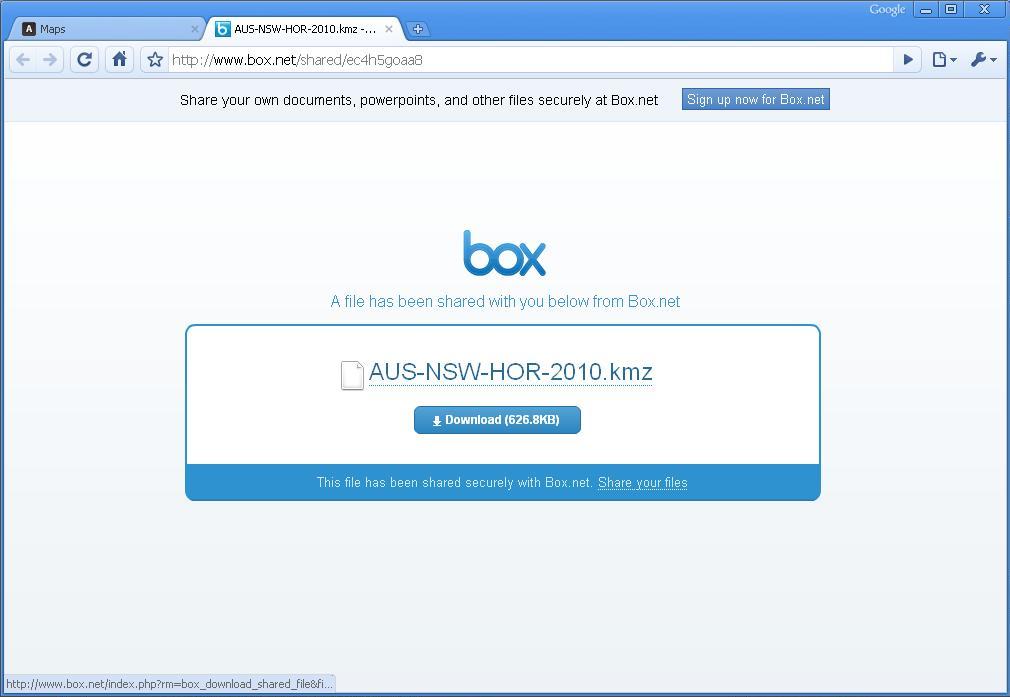 Basic viewing
Basic viewing
There’s a bunch of ways you can view these maps without making any modifications to them. Most of the maps on the Tally Room group each individual electorate (or ‘polygon’) into folders based on geographical areas. I’m using the 2010 federal boundaries for New South Wales to demonstrate this. You can zoom in to individual seats or regions by double-clicking on the seat/folder in the left-hand side panel where each file is listed.
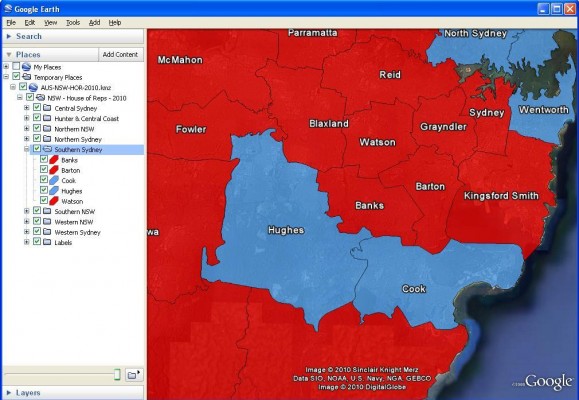 In the above map I have double-clicked on the ‘Southern Sydney’ region and the map has zoomed in to show those five seats and the surrounding areas. It is also possible, and very useful, to turn off individual seats or regions using the tick boxes to the left of each item’s name.
In the above map I have double-clicked on the ‘Southern Sydney’ region and the map has zoomed in to show those five seats and the surrounding areas. It is also possible, and very useful, to turn off individual seats or regions using the tick boxes to the left of each item’s name.
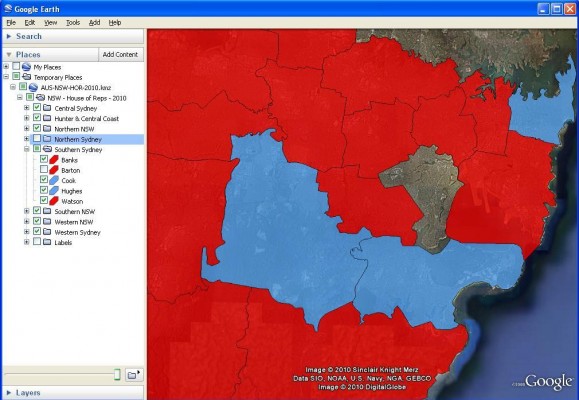 In this map I have turned off the Labels file, as well as the whole ‘Northern Sydney’ folder and the seat of Barton.
In this map I have turned off the Labels file, as well as the whole ‘Northern Sydney’ folder and the seat of Barton.
Changing styles
In addition to scrolling around a map, zooming in, tilting, rotating, and turning off certain elements of the map, it is possible to change the ‘style’ of polygons with relative ease.
All electoral maps have a consistent style, but you can change the colour of both the borders of each seat and the insides of each seat, as well as the thickness of lines and the opacity of fill colours, or even turn off one part or the other.
As a standard, all electoral maps are coloured according to the results of the last election used for these maps. Yet in some cases maps have been used for a number of elections. So by changing the colours you can quite easily produce the electoral map for earlier elections. You can also create maps showing other pieces of information about Members of Parliament or their electorates.
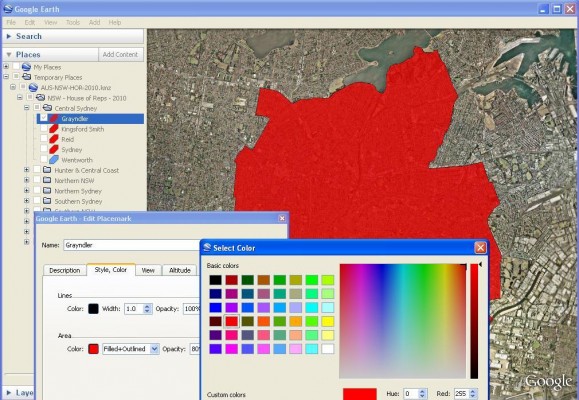 You can change styles by right-clicking on either an individual polygon or a folder in the left-hand panel and then selecting ‘Properties’, then going to the ‘Style, Color’ tab. You can then change styles in the following ways:
You can change styles by right-clicking on either an individual polygon or a folder in the left-hand panel and then selecting ‘Properties’, then going to the ‘Style, Color’ tab. You can then change styles in the following ways:
- Line colour
- Area colour
- Line thickness (set here at 1.0)
- Line opacity (set here at 100%)
- Area opacity (set here at 80%)
- Filled+Outlined/Filled/Outlined – set whether lines or area or both will be shown – you can set it so boundary lines don’t show, or that the inside of each seat is completely transparent.
Changing settings allows you to use seats in different ways. Sometimes when overlaying one map on top of another you will want to make one of them a thick line with no fill colour to create the best contrast. Reducing opacity also makes it easier to see the satellite images underneath the polygon. Changing the settings of an entire folder will change every polygon in that folder. The next image shows a different view of the map of Grayndler.
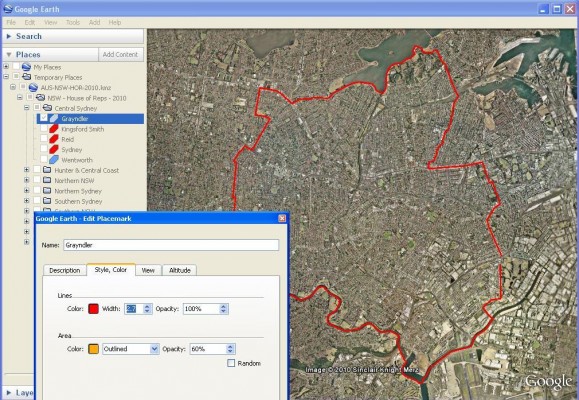 Folders
Folders
You can also create new folders which mix and match different polygons and placemarks from different index maps. For example, you could make a folder including both state and federal electorates for the same area. This image shows a basic example.
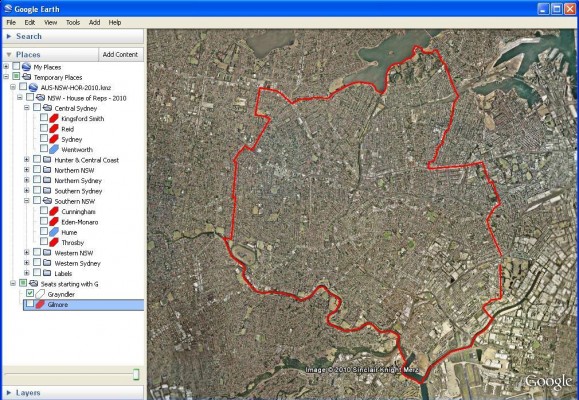 Overlays
Overlays
One of the best features of Google Earth is the ability to overlay different maps on top of each other. By downloading different maps and changing their styles and turning individual seats on and off (or moving them into different folders) allow you to produce new maps. The following image shows an overlay of the NSW state electorate of Marrickville on top of the federal electorate of Grayndler. The styles of both seats have been changed to give the best appearance.
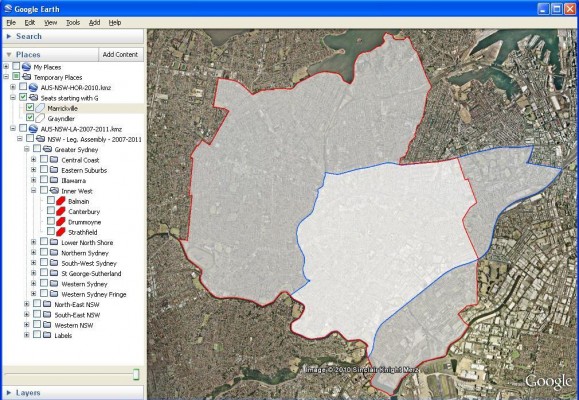 You can also turn on and off a variety of layers provided by Google Earth. The following map has turned on the ‘roads’ layer, the ‘borders and places’ layer and the ‘rail’ layer in the ‘transportation’ folder, which is itself contained in the ‘places of interest’ folder. You can find these under the ‘Layers’ section at the bottom of the left-hand panel.
You can also turn on and off a variety of layers provided by Google Earth. The following map has turned on the ‘roads’ layer, the ‘borders and places’ layer and the ‘rail’ layer in the ‘transportation’ folder, which is itself contained in the ‘places of interest’ folder. You can find these under the ‘Layers’ section at the bottom of the left-hand panel.
This map also shows how you can tilt and rotate the map to give a different appearance to a map. In this case I have tilted and rotated it to show Sydney Harbour in the background.
Screenshots
Google Earth makes it very easy to take screenshots of just the map part of the program, which can be shared, for example posted in the comments of this blog. Simply hold down CTRL-ALT-S, and you get the following screen:
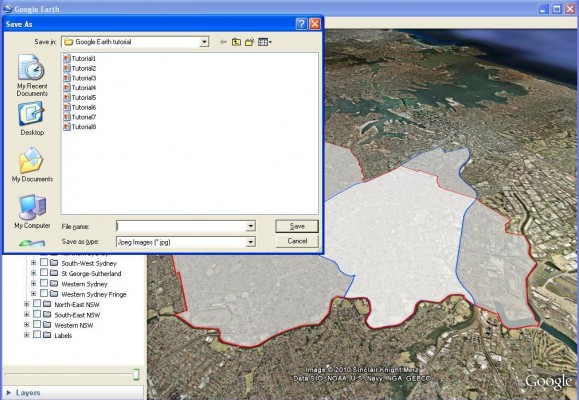 Which produces the following image without the need for cropping or the use of an image program at all.
Which produces the following image without the need for cropping or the use of an image program at all.
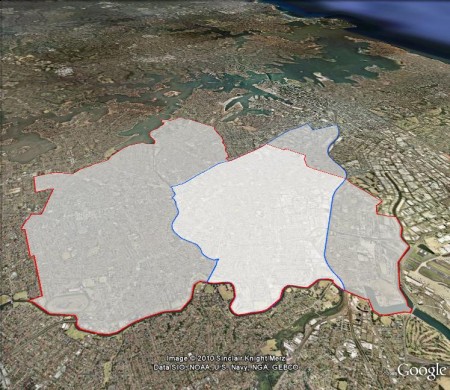 So there you go. You can do much more sophisticated work with these basic techniques, and use them to produce your own maps. Please post any questions or tricks you have discovered in the comments thread below.
So there you go. You can do much more sophisticated work with these basic techniques, and use them to produce your own maps. Please post any questions or tricks you have discovered in the comments thread below.


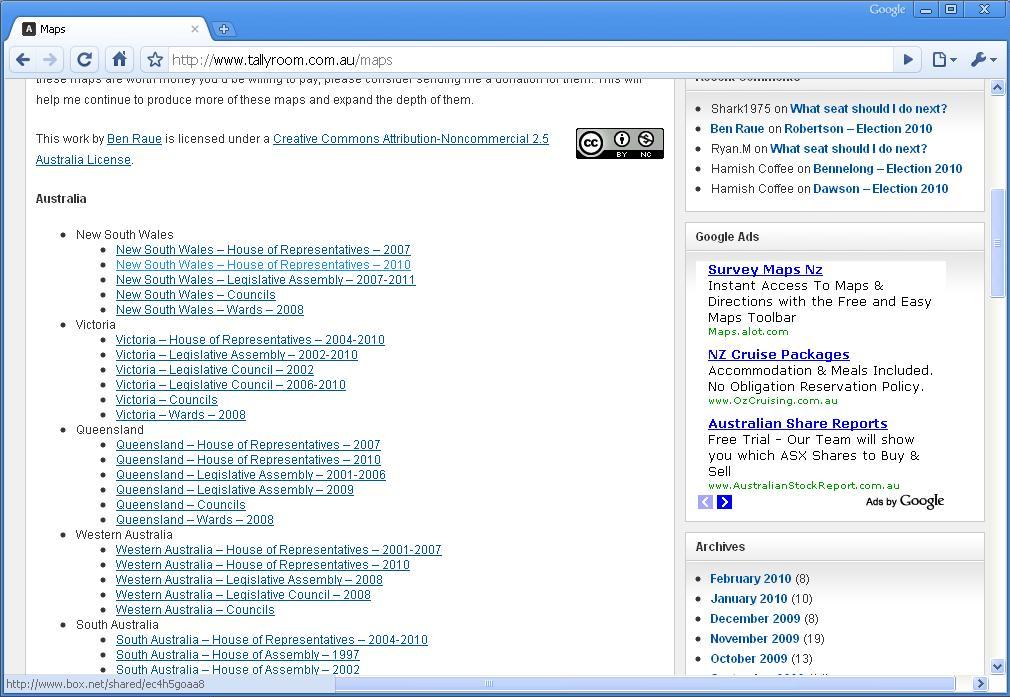
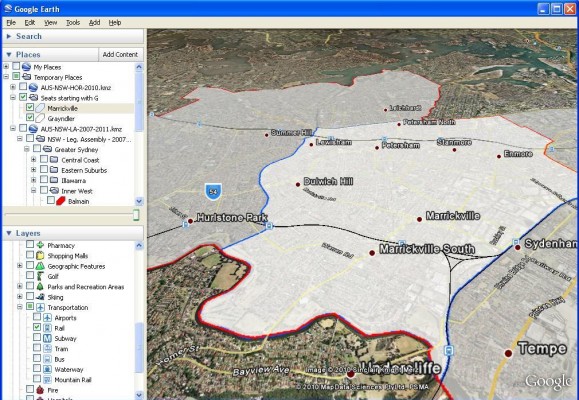
Great work! One question:
I can locate polling booths, taken from the last federal election, within google maps for my electorate which also gives you the ability to use street view to get a good visual of on-site access, shade, etc without having to physically visit. My question is how do you then lock street view to the polling booth marker on google maps, in such a way that you can move to another booth and come back to the previous booth with street view intact?
This is great! I’d like to know more about how to make such accurate polygons in Google Earth!